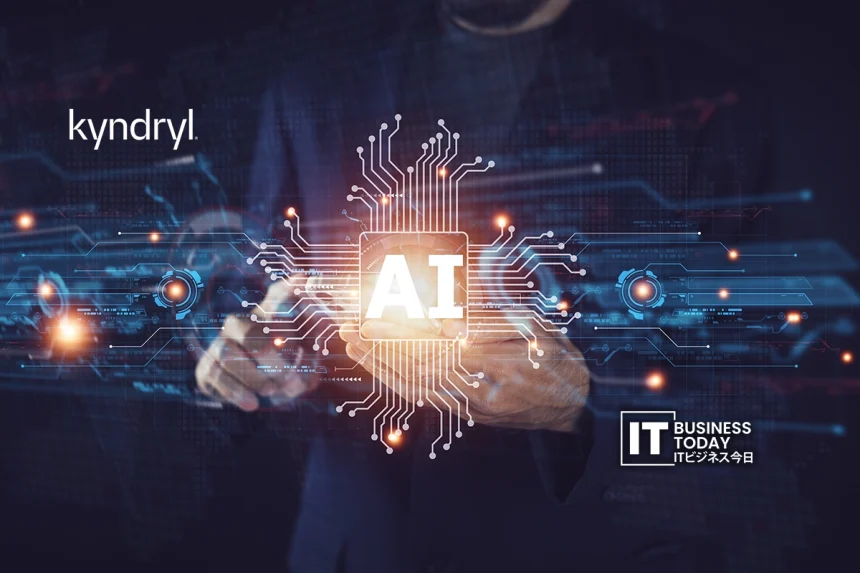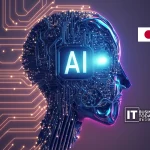Kyndryl, a leader in IT infrastructure, announced a big upgrade to its mainframe solution. This includes a new AI framework and services designed for IBM z/OS environments.
This initiative brings together Kyndryl’s best mainframe skills and advanced AI. It will transform mainframes into agile, insight-driven powerhouses. This change opens up new business opportunities.
What’s New: AI Meets Mainframe
Kyndryl’s Agentic AI Framework drives its latest service. It uses smart, self-directed AI agents that learn from experience. These agents act on their own but still keep humans informed and in control.
These agents speed up decision-making by automating and optimizing workflows. They solve problems early in complex hybrid IT environments.
こちらもお読みください: Japan strengthens deep-tech ties with India in chips and AI
A bridge between decades of institutional mainframe knowledge and AI, enabling organizations to overcome skills gaps.
More responsive, resilient IT infrastructure able to adapt to both business opportunities and threats.
These services are integrated with Kyndryl Bridge, the company’s open integration platform, adding automation, predictive analytics, and orchestration capabilities across the mainframe infrastructure.
Kyndryl is also deploying IBM watsonx Assistant for Z, enabling intelligent automation and lifecycle management directly on IBM mainframe systems.
Why It Matters: The AI-Mainframe Convergence
Mainframes are essential for big companies, especially in finance, insurance, and government. They ensure reliability and security, which are essential. For decades, these systems have been strong. However, updating them is often slow and risky.
Kyndryl helps handle this challenge through its agentic AI framework. This new approach will enable enterprises to:
Modernize without rip-and-replace: Organizations can build intelligent agents on top of legacy mainframes to drive further automation and operation improvement.
Address the talent shortages: Most organizations lack multi-skilled talent to understand AI and mainframe technologies, as per Kyndryl’s own 2025 survey.
AI agents can help fill that skills gap.
Unlock innovation: AI-driven mainframe systems quickly manage old data. This aids in tasks such as real-time fraud detection, predicting maintenance needs, and analyzing customer behavior.
Key cost and revenue benefits: Kyndryl says AI in mainframe modernization can lower costs and boost revenue. In its 2025 survey, the adoption of agentic AI could lead to $12.7 billion in cost savings and $19.5 billion in additional revenue over three years.
Impact Potential on Japan’s Technology Industry
The announcement may have a big impact in Japan. Many large companies there still depend on mainframe systems.
Accelerating Legacy Modernization
Japanese banks, insurers, and industrial firms using IBM mainframes for crucial tasks can modernize with Kyndryl’s AI services. This change won’t risk their operational stability. It is the ability to layer AI on their existing infrastructure that may make the business case compelling.
AI導入の促進
Japanese companies can boost their potential by using generative AI and smart automation on mainframes. This approach lets them modernize without fully moving to the cloud. They build hybrid environments that mix legacy systems with AI-native ones.
人材・技能開発
Japan’s tech sector may increasingly need people who understand mainframe architecture and AI. Kyndryl’s model can help upskill teams and create a new wave of hybrid expertise by bringing together institutional knowledge of the mainframe with AI.
Innovation in Regulated Sectors
In finance and government, compliance and latency demands are strict. Japan can use Agentic AI to automate tasks smartly. It helps with predictive analytics and allows for real-time operational decisions. Plus, it keeps security at a high level.
Strengthening IT Ecosystem
With Kyndryl incorporating agentic AI into mainframes, Japanese consulting firms, system integrators, and cloud providers may team up and provide similar modernization solutions. This may help speed up the evolution of Japan’s infrastructure services landscape.
Business Implications: Risks and Opportunities
チャンスです:
Reduced time and risk in modernization: AI adoptions are possible incrementally, without necessarily shutting down the most crucial systems.
Higher ROI on legacy investments: The enterprises can extract new value out of many decades-old mainframes by making those “AI-aware.”
Competitive Advantage: Early adopters of agentic AI on mainframes will likely beat their peers. They will excel in cost efficiency, innovation, and resilience.
Risks and Challenges:
Change management: Adding AI agents to core systems needs close monitoring. It also needs good collaboration between humans and machines.
Data and Operational Security: Mission-critical systems require robust security. AI integration adds new areas to manage.
Skill gaps: Companies might still have a hard time finding engineers. They need experts who can design, monitor, and maintain AI workflows, even with advancements in AI.
Upfront Investment: Companies might need to invest in consulting, licensing, and integration. This helps them gain long-term savings.
結論
With its new agentic AI framework for mainframes, キンドリル is making a powerful bet-that legacy systems can be engines of innovation, not liabilities. Enterprises can modernize their IBM z/OS environments using AI-driven automation. This brings insight and resilience. They can evolve while keeping their core infrastructure intact.
If Kyndryl’s approach is successful, it will change how Japanese and global companies see mainframe computing. They will see it as a smart, AI-driven platform for the digital age instead of just a legacy system.







